Musician Gergely Bogányi offers a curvaceous take on the traditional grand piano
Hungarian pianist Gergely Bogányi has redesigned the grand piano to improve the quality of the sound produced, resulting in an unusual sculptural form (+ movie).
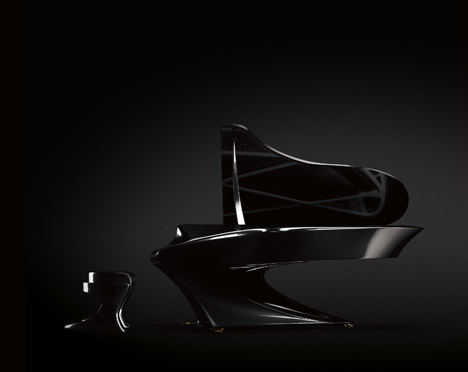
The Bogányi Piano replaces the hard lines of the traditional grand piano with sweeping curves that form a continuous body and stand.
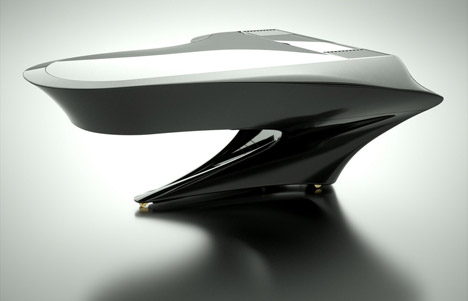
A matching seat shares the same aesthetic, which is "based upon the movements and flows of classical music," according to the musician.
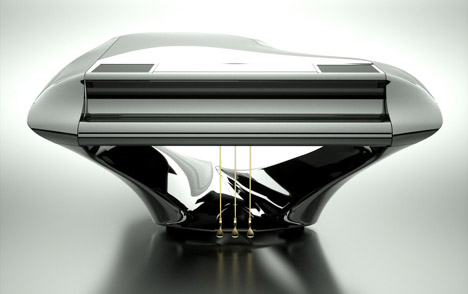
Integrated almost seamlessly into the smooth top, the lid props up on a gently curved spine to reveal its inner mechanics.

Despite its ostentatious shape, the piano was designed primarily to produce the highest possible sound quality.
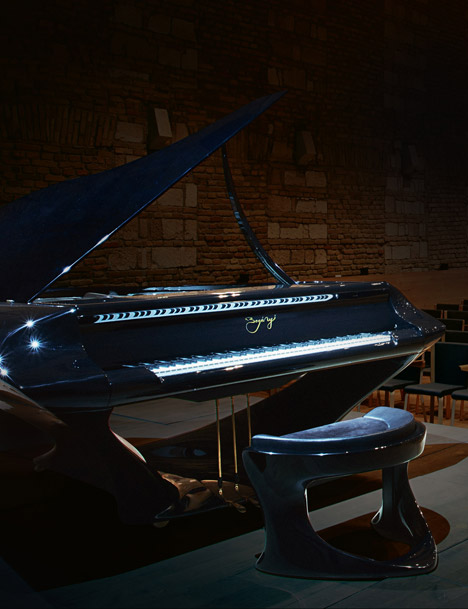
"For years I have played with a sound in my head, different to that which I was playing," said Bogányi. "It was always in another dimension different from the actual sound coming from the piano."
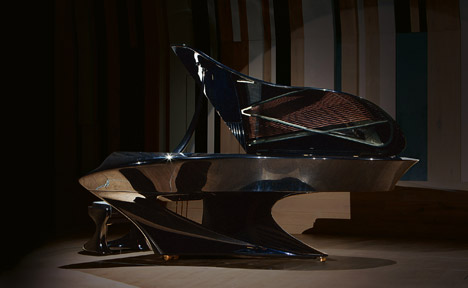
When a player hits one of the 88 keys of a grand piano, it triggers a hammer to hit a corresponding string that vibrates to produce the desired note.
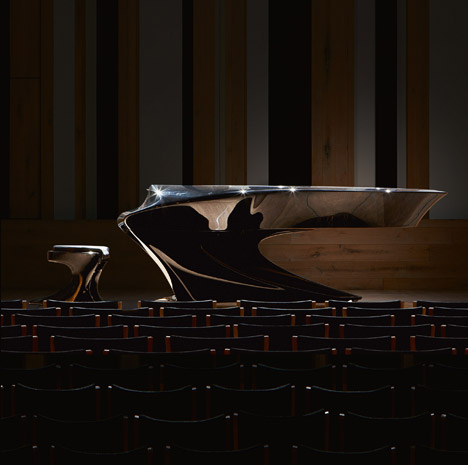
Bogányi worked with a team of Hungarian technicians to instead create a unique composite soundboard – the area that the strings vibrate against – within a modified iron and wood frame.
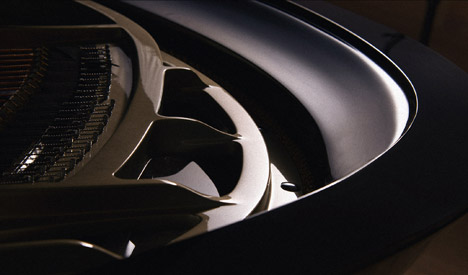
"We experimented through some 8,000 team engineering hours with modern materials, particularly with the soundboard, searching for new technical solutions, constantly analysing the derived new spectre of sound," said Bogányi.
The soundboard is designed to be more resistant to environmental conditions such as humidity or dryness, so the instrument will hold its tune for longer.
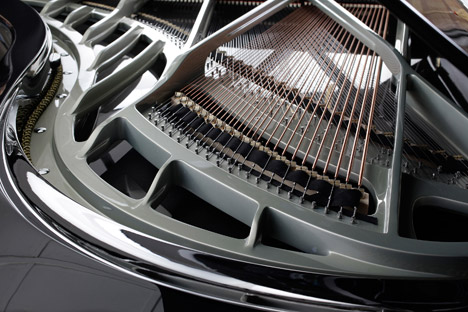
"The piano features over 18,000 parts, as we looked into every area possible to enhance the quality of sound," Bogányi said. His piano also features a redesigned agraffe system of guides for the strings at the tuning-pin end, which ensure the correct height and determine the length of each string.

Produced by German manufacturer Louis Renner, the piano is also shaped to help transmit sounds with higher efficiency and clarity.

The base features an opening above the pedals, creating two legs rather than three to allow more sound to reach the audience during a stage performance.